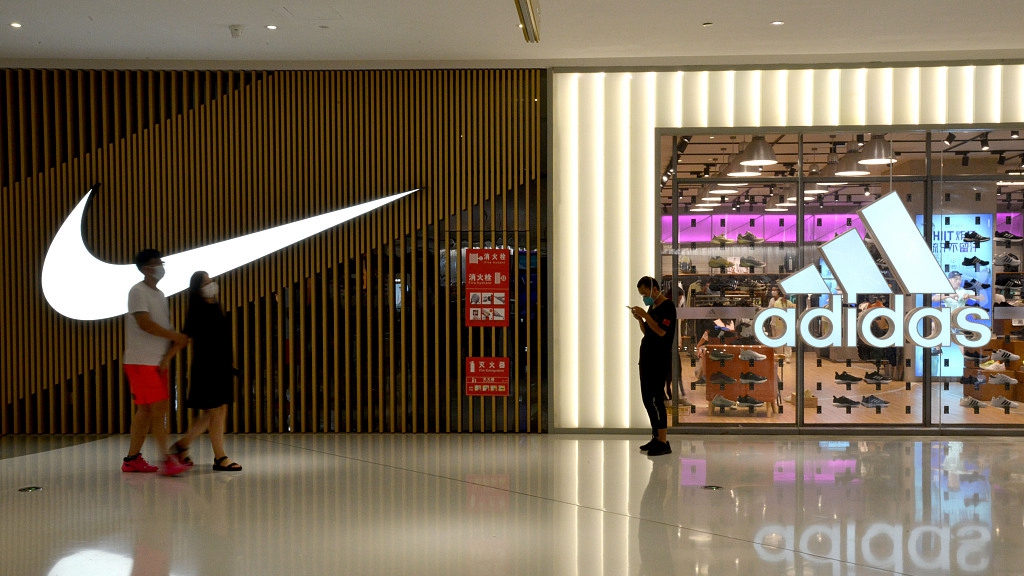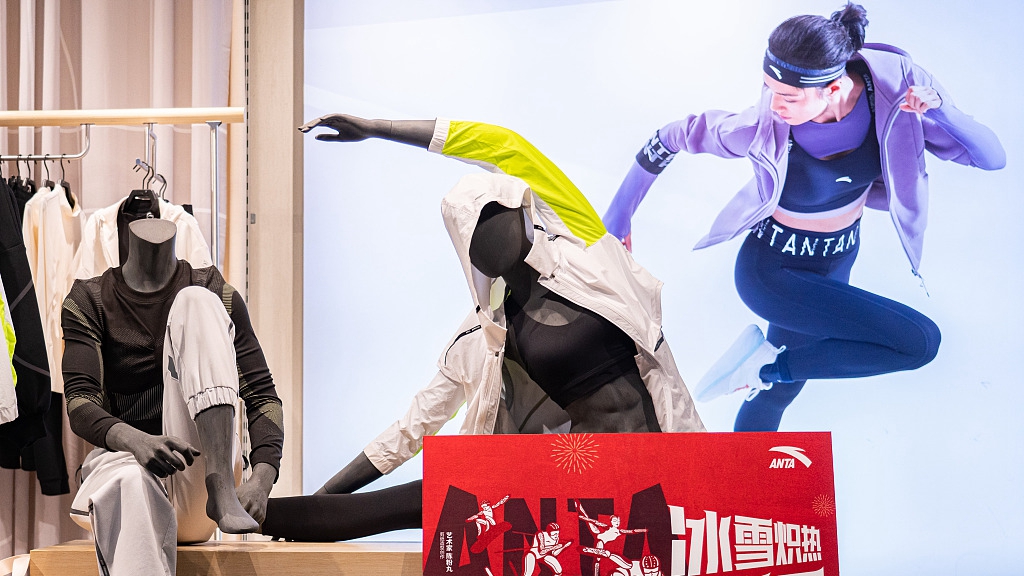
People walk past Nike and Adidas stores in Hopson One Mall, Beijing, China, July 30, 2022. /CFP
People walk past Nike and Adidas stores in Hopson One Mall, Beijing, China, July 30, 2022. /CFP
The way Chinese consumers think about foreign brands has changed over time, and the traditional strength of foreign giants is being tested as shown in the latest sales number in sportswear companies Nike and Adidas.
Adidas reported a 35 percent drop in China market sales in their most recent fiscal quarter. In comparison, Nike saw a decline of 19 percent as young shoppers frowned upon their perceived indifference towards the world's largest consumer market.
In an interview this month, CEO of Adidas Kasper Rorsted said frankly that they made a mistake in China and they should better understand local consumers.
Both sportswear brands took a stand against Xinjiang cotton last year after allegations of "forced labor" in the region turned out to be groundless.
"When we hear that foreign brands are boycotting Xinjiang cotton, we feel very uncomfortable and think these foreign brands are misusing situations," said Dao Bochen, a 24-year-old shopper, to CGTN.
They have taken the Chinese market for granted and wish to muddle through controversies, but people remember these things, Dao added.
Rorsted also announced he was stepping down from Adidas last week after struggling in the Chinese market. At the same time, the pressure was made worse by a buildup of inventory, a lack of new products, and problems in the supply chain.
05:23

China's Anta Sports took up 16.2 percent of China's market share in 2021 and surpassed Adidas' 14.8 percent for the first time, data from Euromonitor, a market research company, showed. Nike's market share slid to 25.2 percent, while Li Ning, ranked No. 4, increased its slice to 8.2 percent.
The trend has continued this year. Anta's revenue in the first half of the year hit a record high at 25.9 billion yuan ($3.75 billion) and surpassed two of Nike China's most recent fiscal quarters' revenue of $3.72 billion.
Nike China's third and fourth fiscal quarters spanned from December 2021 to the end of May 2022.
Consumers' preferences for international brands seem to be fading. At the same time, "China chic" adds another layer of uniqueness to domestic brands, said Wang Sirius, CEO of Kantar Marketplace China.
"China chic" refers to designs that demonstrate Chinese culture which usually blends tradition with modernity.
"The old shopping concept involved a bit of foreign worship, or at least that those foreign things represented social status. When people realize that there isn't much difference in quality, they'll start to choose Chinese brands," another consumer told CGTN.

An Anta store in Shanghai, China, February 3, 2022. /CFP
An Anta store in Shanghai, China, February 3, 2022. /CFP
Meanwhile, many domestic brands can swiftly detect emerging trends and play a part in them, while foreign brands struggle to catch up. They are increasingly adjusting management teams to facilitate fast decisions in catering to consumer needs, but they should speed up the process, Wang added.
However, Wang said that the poor performance of some brands is not a trend among foreign companies in China, even though it may look like one.
"In our latest Chinese consumer tracker, 17 of 43 foreign brands have increased their market share in China over the past year in the fast-moving consumer goods category," he said.
"None of our foreign clients has shown the slightest temptation of abandoning the Chinese market," said Wang, adding that China retained a massive market size, a complete supply chain and adequately dynamic innovation power.
As an embodiment of globalization, in the 40-plus years of foreign companies entering China, the relationship between China and these international giants has evolved from clear-cut buying and selling to a more complex integration involving the entire industrial chain.
Both Nike and Adidas manufacture their products in China. Both sportswear giants treat China as a market for long-term growth and are committed to further investment.
As a connector of the dual circulation, foreign companies may become increasingly integrated into the Chinese market in the future. In the meantime, they may have to search for new ways to revive their charm among young Chinese consumers.
Read more: Mercedes-Benz CEO: China remains biggest market & growing technological hub

